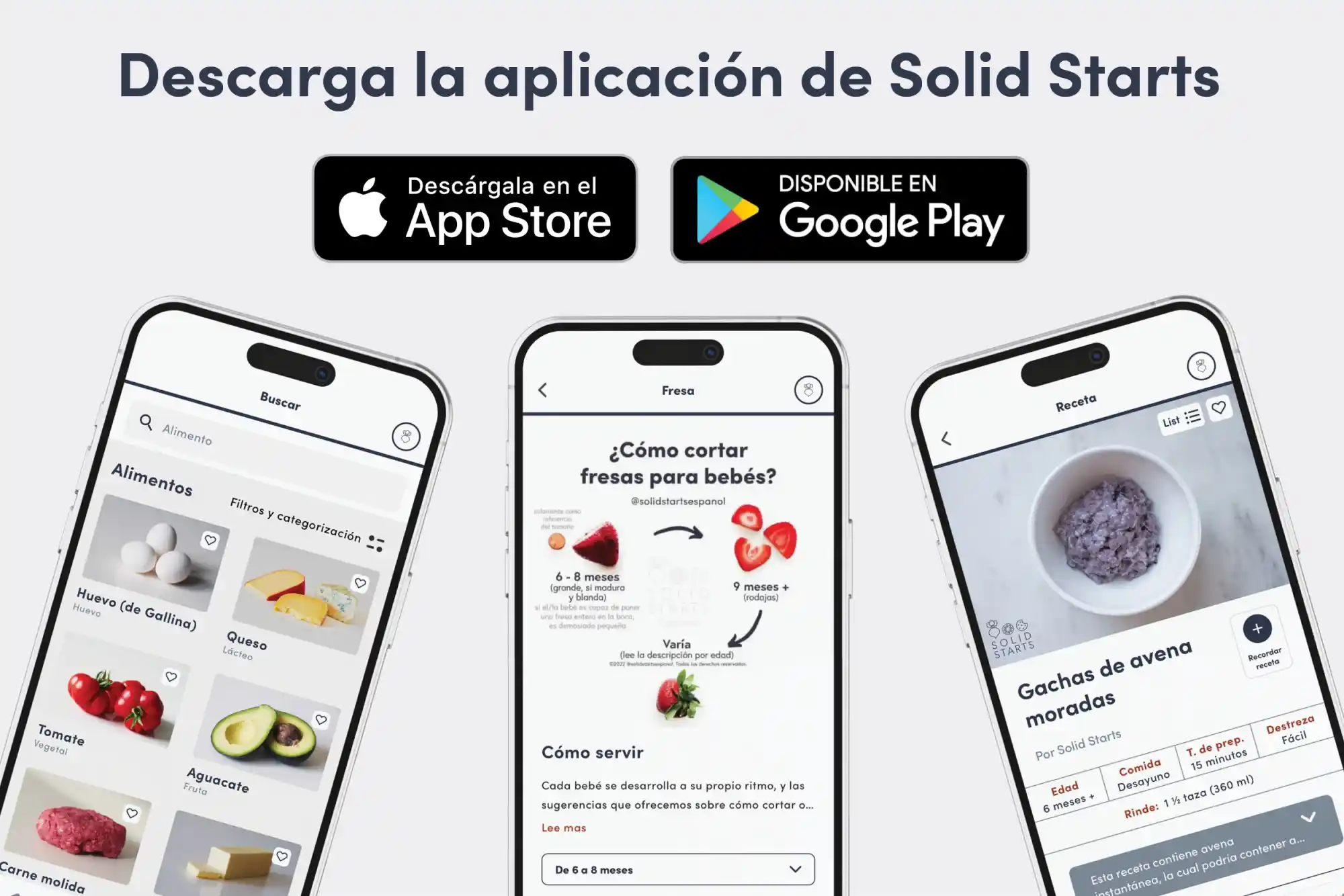Acceda a la base de datos First Foods® en Solid Starts App.
Leer másOregano
Hierba/Especia
Sugerencia de edades
6 meses
Alto contenido de hierro
No
Alérgeno común
No

When can babies have oregano?
Oregano may be introduced as soon as baby is ready to start solids, which is generally around 6 months of age.
There is a diverse family of aromatic herbs grown worldwide, including Greek oregano, Mexican oregano, Syrian oregano, and many more. The leaves come in different colors and shapes, but what unites them is a plant compound known as carvacrol, which lends the plants a distinctive strong, herbal flavor. Whether fresh or dried, oregano brings savory richness to countless dishes, including escabeche, pizza, and spice blends like za’atar.
How do you serve oregano to babies?
Cada bebé se desarrolla a su propio ritmo, y las sugerencias que ofrecemos sobre cómo cortar o preparar determinados alimentos son generalizaciones para una amplia audiencia.
6 months old +:
Finely chop fresh oregano leaves and mix them into age-appropriate dish, like mashed vegetables, a dressing for cooked vegetables, or a sauce for meat. As long as the stem of the plant is soft, you can finely chop it along with the leaves. If the stem has gotten woody and tough, remove the leaves from the stem before chopping. Alternatively, use dried oregano or powdered oregano to flavor food.
12 months old +:
Use fresh, dried, or powdered oregano as you normally would in dishes, including whole fresh oregano leaves. If you’ve left a large, woody sprig of oregano in a dish to flavor it as it cooks, remember to remove it before serving to reduce the chance of discomfort if it ends up in the toddler’s portion of the meal.
Videos
Is oregano a choking hazard for babies?
No. Both fresh and dried oregano present a low risk when safely prepared for a child’s age and developmental ability, though, in theory, an individual could choke on any food. To reduce the risk, prepare and serve oregano in an age-appropriate way as described in the How to Serve section. As always, make sure you create a safe eating environment and stay within an arm’s reach of baby during meals.
Learn the signs of choking and gagging and more about choking first aid in our free guides, Infant Rescue and Toddler Rescue.
Is oregano a common allergen?
No. Allergies to oregano are not common, but cases have been reported. Note that certain dried herb blends that feature oregano may contain sesame or other common food allergens, so make sure to read labels thoroughly. If a child is sensitive to plants of the Lamiaceae family such as mint, marjoram, basil, lavender, sage, or thyme, take care when introducing oregano, as these plants are closely related.
As you would when introducing any new food, start by offering a small quantity for the first few servings. If there is no adverse reaction, gradually increase the quantity over future meals.
Is oregano safe for babies?
Yes, oregano is generally recognized as safe in amounts typically used in cooking. Oregano essential oil, on the other hand, should be avoided for babies, as its safety and potency has not been sufficiently studied in children.
Is oregano healthy for babies?
Yes. Oregano offers small amounts of a variety of vitamins, minerals, and fiber. It also contains a number of plant compounds, which may offer anti-inflammatory, antimicrobial, and antioxidant properties.
★Tip: When fresh oregano isn’t available, substitute dried oregano. One tbsp (15 ml) fresh oregano is about equal to 1 tsp (5 ml) dried oregano. Adjust to taste.
¿Cuántas comidas al día debe hacer un/a bebé?
Puede variar. En términos generales, la idea es traer al/a bebé a la mesa al menos una vez al día entre los 6 y 7 meses de edad, dos veces al día entre los 8 y 9 meses de edad y 3 veces al día a partir de los 10 meses de edad. Consulta nuestros ejemplos de horarios de alimentación para obtener más detalles.
¿Cuánta comida debo servirle al/a bebé?
Al comienzo, ofrece una pequeña cantidad y confía en que tu bebé sabe cómo mostrar interés si quiere más haciendo ruidos, gestos, o gritando o extendiendo la mano. Ten en cuenta que la mayoría de los bebés entre 6 y 9 meses de edad no consumen muchos alimentos sólidos al principio. Para los bebés de entre 10 y 12 meses de edad, enfócate en ofrecer el equivalente a una comida equilibrada para adultos, pero con porciones más pequeñas. Pon atención a las señales que te da el/la niño/a: cuando el/la bebé te muestre que desea “más”, ofrécele más comida. Cuando el/la bebé muestre señales de “ya terminé”, para de ofrecerle comida.
Nuestro equipo
Escrito por
Consejos de expertos directo a tu bandeja de entrada
¡Suscríbete y recibe correos semanales con recetas, consejos y más!
Copyright © 2025 • Solid Starts Inc




